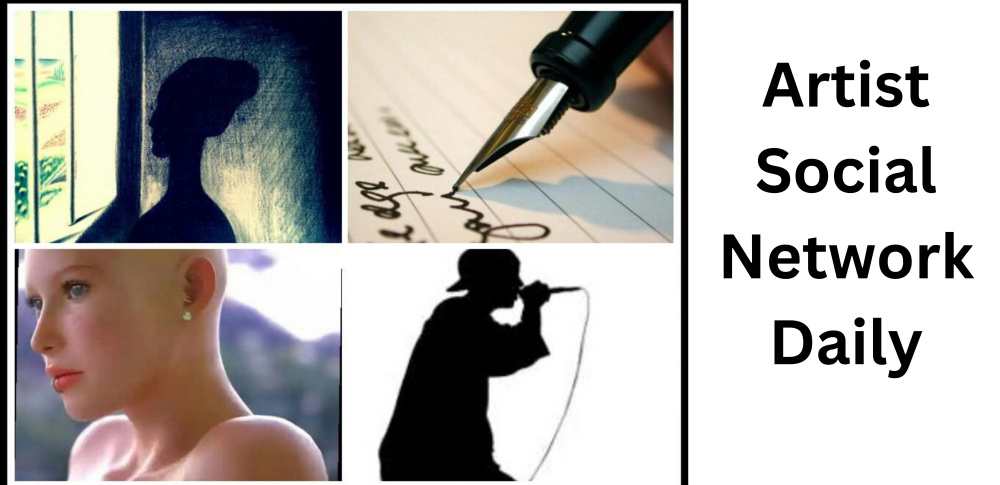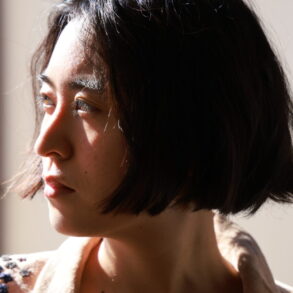March 31, 2025
Students demonstrate that innovation thrives at the intersection of disciplines
Posted in: Arts, Research, Science and Technology, Uncategorized, University
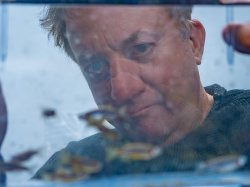
The Department of Art and Design in the College of the Arts and the Department of Biology in the College of Science and Mathematics at Montclair State University joined forces to explore what happens when art and science collide. The result? A visually striking and intellectually stimulating exhibition that brings neuroscience to life through artistic expression.
Fusing Art and Neuroscience: The Zebrafish Project
Assistant Professor of Biology Thomas Mueller, who uses zebrafish as a research model to study human affective disorders, approached Professor of Art and Design Cathy Bebout, head of printmaking, with an invitation for the collaboration.
Mueller’s work focuses on the amygdala’s role in regulating fear and anxiety in the brain. “Zebrafish is really a very important genetic model organism,” he explained. “It shares around 70% of genetic similarities with humans and about 80% of the diseased genes that you find in humans have a counterpart in zebrafish.”
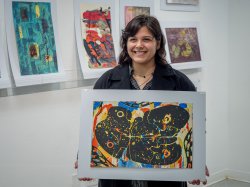
Following a presentation of Mueller’s research, students were challenged to create artwork inspired by scientific imagery. The resulting prints, produced through collaboration and layering, mirrored the investigative process of scientific discovery.
“There’s a relationship between this collaborative way of working and a scientific process,” said Adjunct Art Professor Bridget McGuire. “It’s experimental. It was an interesting investigation and felt like a research collaboration.”
Senior Lindsey Scheier, a Visual Communication Design major, found inspiration in the abstract nature of emotions: “Dr. Mueller’s presentation made me think about abstraction, and how to convey fear through abstraction. It felt too literal to print a fish, so I tried to explore what the shapes and colors of fear might feel like, especially for such a tiny creature.”
Bebout emphasized the project’s educational impact: “This project uses art and science as a teaching tool, fostering dialogue and learning between disciplines while demonstrating the arts’ power to drive engagement and social change.”
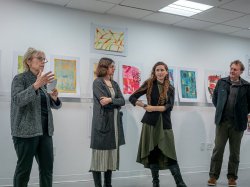
From Data to Design: The Creative Process
Under the guidance of Montclair faculty, students transformed scientific data and microscopic images into artwork now on exhibition at Finley Gallery. The scientific research generated vibrant images of neurons and neural circuits in zebrafish brains, inspiring a unique approach to artistic expression.
“It shows up in the brain as color, so that’s why you see all this brilliant color on display,” Bebout said about the students’ artwork. “The students, in the beginning, were like zebrafish too; I could see a lot of fear and emotion. As artists, we get these ideas in our head about what we see. And for the students, it was sort of like groping in the dark in the beginning, and then things started to develop.”
The students’ work emerged from several “print jams,” intense printmaking marathons where Illustration, Visual Communication Design, Visual Arts, and Art Education majors collaborated. The final exhibition, “Zebrafish and the Art of Fear: A Creative Inquiry into Memory and Emotion,” showcases a range of abstract and literal interpretations.
The exhibition is part of a month-long, multi-faceted series of events that included animated projections featuring zebrafish in both the Finley Gallery and the lobby of Irvin D. Reid Hall, an Art Forum discussion with London artist Andrew Carnie, who specializes in science-based works, an Art and Science Symposium featuring renowned neuroscientists, Koichi Kawakami, of the National Institute of Genetics in Mishima, Japan, and New York University Professor Joseph E. LeDoux, director of NYU’s Emotional Brain Institute.
Senior Visual Arts major Grace Whitaker incorporated fish eyes into her prints, while other students took a more abstract approach. Scheier described the process as both challenging and rewarding. “Screen-printing being such an experimental art form encouraged learning through doing. It was a great opportunity for creative exchange, as we all shared and taught each other new techniques along the way.”
Art Professor Sharon Lindenfeld echoed this sentiment: “You learn from what you just printed and then you try something different in the next one, much like a scientific process. Working this way creates tension and feelings of anxiety and fear, relating back to the research.”
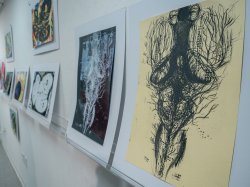
Looking Ahead: The Future of Interdisciplinary Collaboration
For many participants, this project marked their first time working across disciplines. “I’ve never worked collaboratively like this, so it was such a cool experience,” McGuire said. “There’s a relationship between this collaborative way of working and a scientific process, it’s very experimental. It creates tension, almost a feeling of anxiety and fear, again relating back to the research.”
Science and art faculty members are already planning future interdisciplinary collaborations. “This is the startup of a major endeavor and future collaborations,” said Mueller.
Bebout highlighted the broader impact: “The art will help to promote science and get people’s attention, so they want to know more.”
“And make neuroscience accessible to the wider public and maybe inspire students in the arts and high school students to pursue a career in these scientific sciences or in the arts,” Mueller added.
“I believe art and science are closely connected and more focus should be placed on their collaboration,” Scheier said. “I’m excited to see more partnerships between departments in the future.”
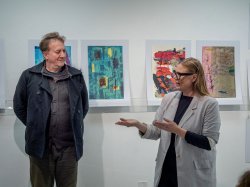
Are you a…
Prospective Student or Parent? Learn more about Visual Arts, Visual Communication Design or other College of the Arts programs or plan a visit to our campus and take the first step in applying to become a Red Hawk.
Journalist?
Contact the Media Relations team for assets or to schedule an interview with a graduating student.
This post was originally published on this site be sure to check out more of their content
